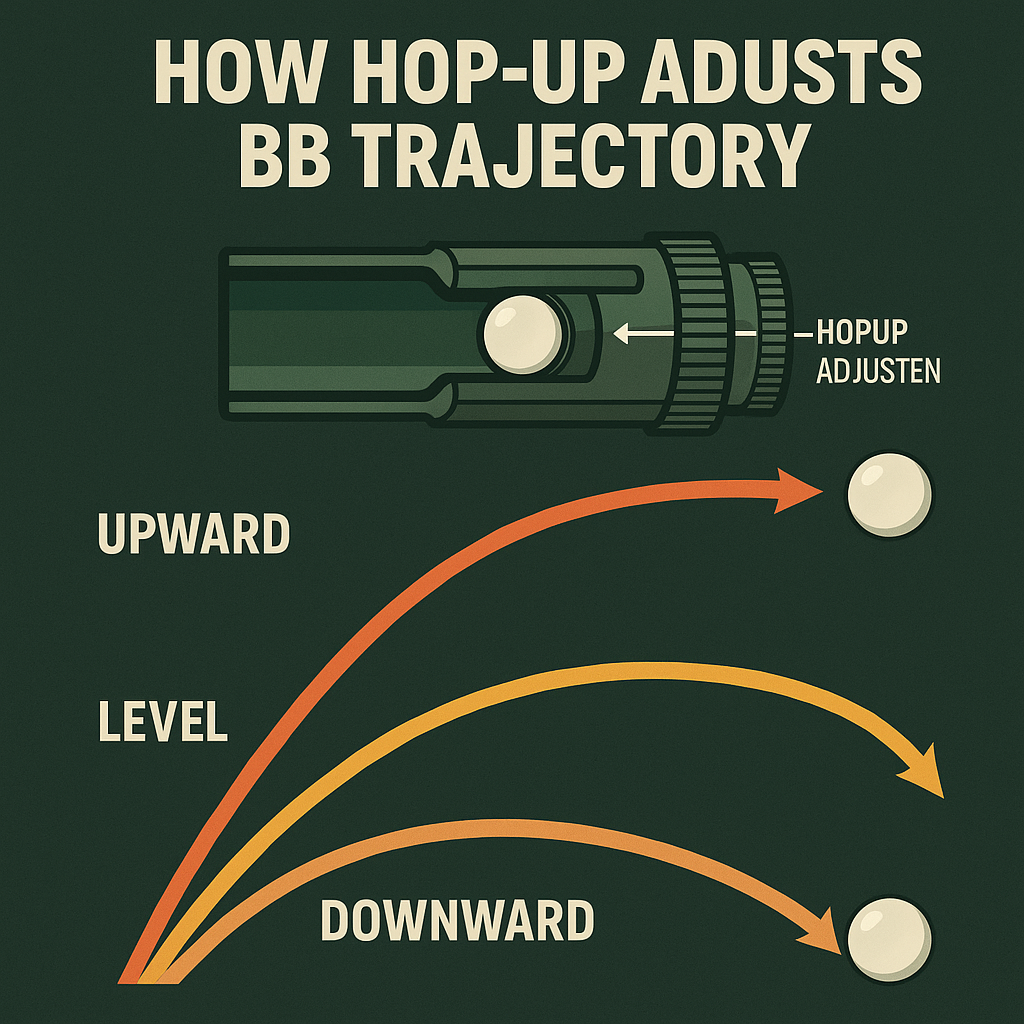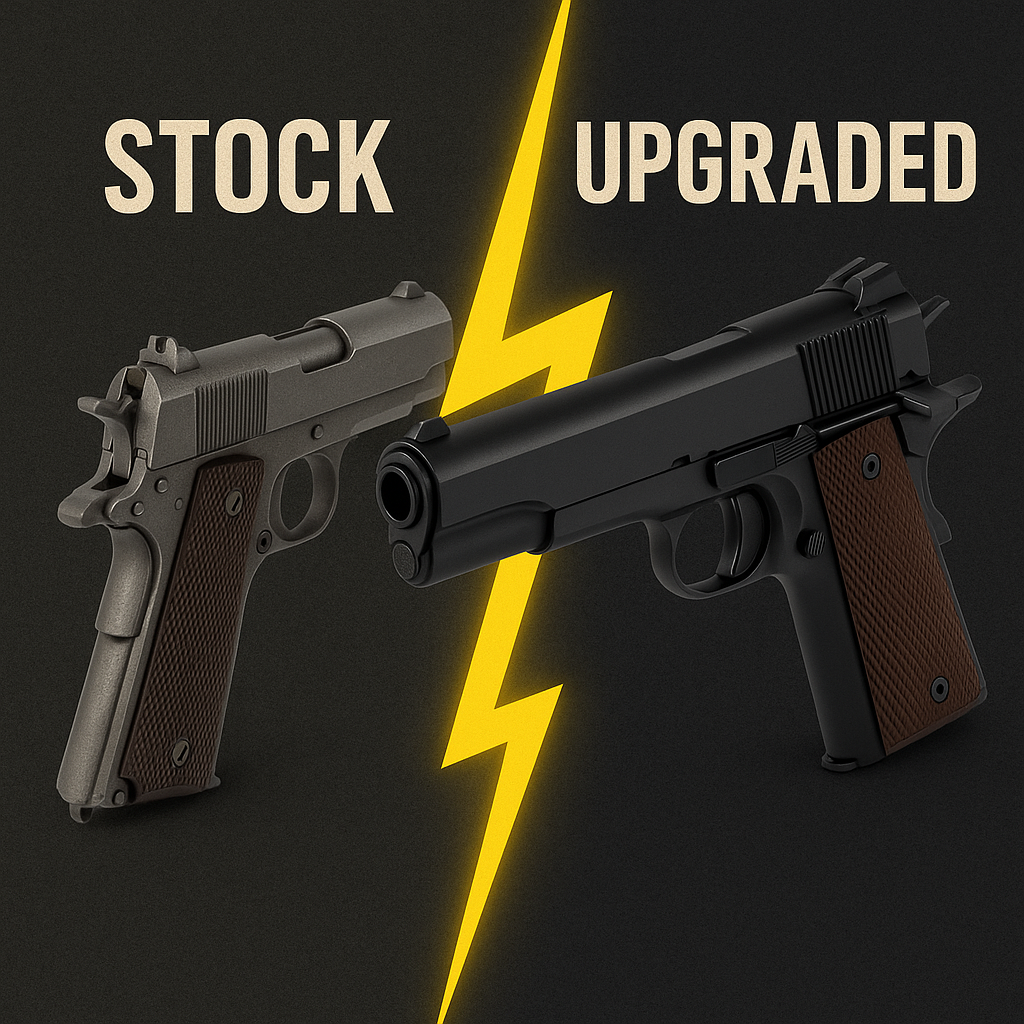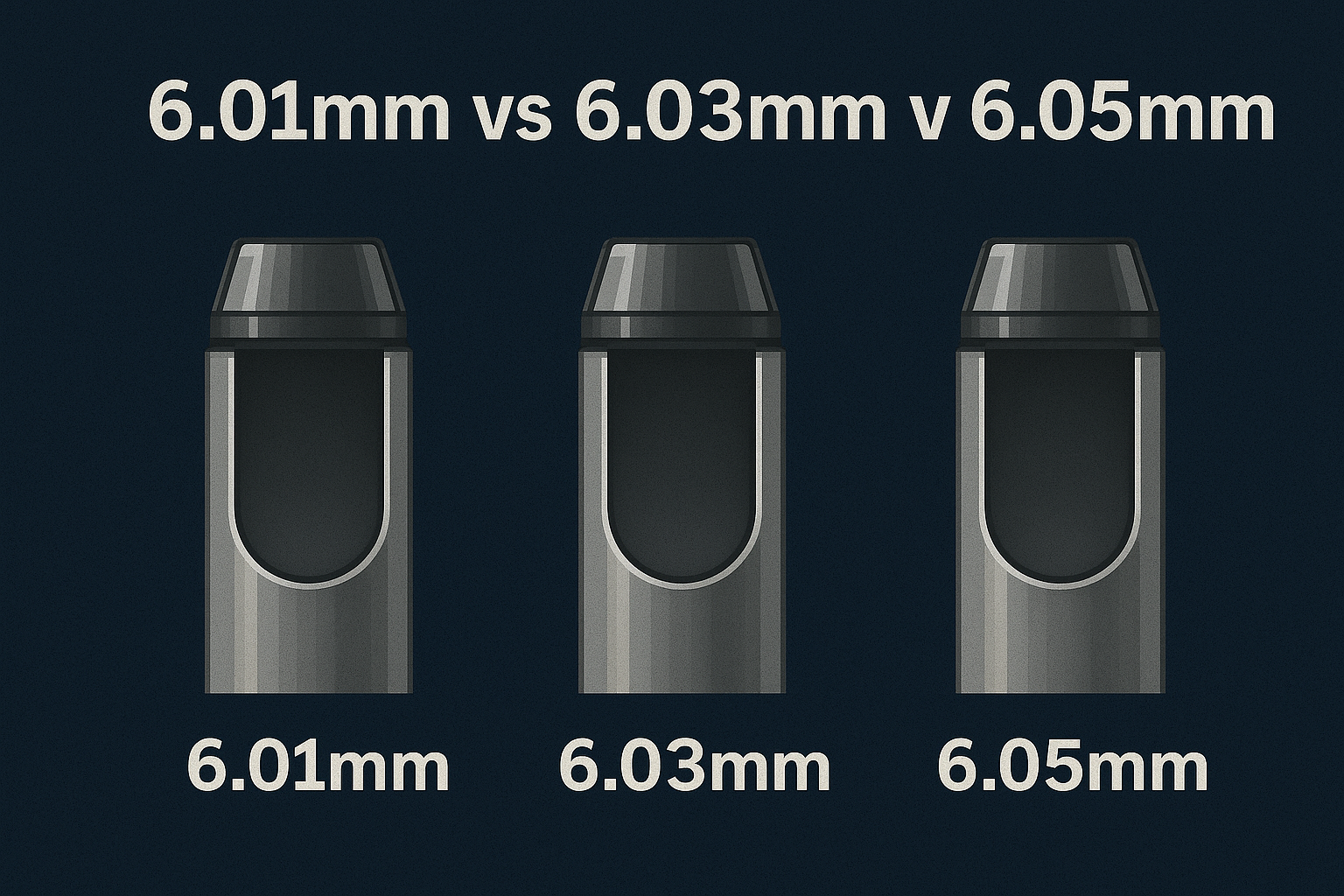
How to Adjust Your Hop-Up for Different BB Weights
If you’ve spent time on the airsoft field, you already know the difference between landing consistent shots and watching BBs veer off target often comes down to how well your hop-up is tuned. Many players upgrade barrels, buckings, and even complete gearbox assemblies, but overlook the simple art of adjusting hop-up for the BB weight they’re using.
This guide will walk you through not only why BB weight affects hop-up performance but also provide a step-by-step process to tune your hop-up, recommended BB weights for different roles, and troubleshooting advice if your shots still aren’t flying straight.
What Exactly Does a Hop-Up Do?
The hop-up is one of the most important parts of your airsoft gun when it comes to accuracy and range. By applying backspin to each BB, it takes advantage of the Magnus Effect: air pressure differences above and below the spinning BB that create lift.
Without hop-up, your BBs would drop quickly due to gravity, and you’d constantly have to aim high. With a properly adjusted hop-up, your BBs can:
-
Fly straighter for longer distances.
-
Maintain consistent groupings.
-
Counteract the effect of gravity and wind drift to some extent.
But here’s the key: different BB weights respond to backspin differently, which is why hop-up adjustment isn’t one-size-fits-all.
Why BB Weight Changes Everything
Not all BBs are created equal. Their mass directly impacts how much hop-up is needed to keep them on target.
-
Lighter BBs (0.20g–0.25g)
-
Require less hop because they’re more easily lifted.
-
Good for beginners, indoor CQB, and lower FPS fields.
-
Downsides: easily affected by wind, less stable in outdoor play.
-
-
Medium BBs (0.28g–0.32g)
-
A sweet spot for most AEGs, GBB pistols, and rifles.
-
Offer a good balance of range, accuracy, and consistency.
-
Heavier than .20s but still affordable for regular play.
-
-
Heavy BBs (0.36g–0.40g+)
-
Preferred for DMRs, sniper rifles, and upgraded builds.
-
Require more hop-up to counteract mass.
-
Fly straighter over long distances and less affected by wind.
-
When you switch BB weights, your hop-up must be retuned. Running heavy BBs on a hop-up dialed for .20s will make them nose-dive early. Running .20s on a hop-up set for .32s will cause them to skyrocket upward.
Step-by-Step Guide: Adjusting Your Hop-Up
Follow these steps to get your hop-up tuned perfectly to your BB weight.
1. Find the Right Environment
Set up in a safe, open space with at least 100–150 feet of range. Outdoor fields are best, but a long backyard or warehouse space works too. Make sure there’s minimal wind so you can see the true trajectory.
2. Start With a Baseline
Load your chosen BB weight and fire a 5–10 round group with your current hop-up setting. Watch the trajectory closely.
-
Dropping too soon? → Increase hop.
-
Rising upward mid-flight? → Decrease hop.
3. Adjust Gradually
Turn your hop-up dial in small increments. Quarter-turns (or even smaller, depending on your unit) are best to avoid overcorrecting.
4. Fire in Controlled Bursts
Always fire 3–5 shots after each adjustment. Individual BBs can vary slightly, so a short burst helps you see the average flight path.
5. Aim for a Flat Flight Path
The perfect adjustment is when your BBs fly flat and straight for most of their travel, then naturally drop at the very end of their range.
Advanced Tuning Tips
-
Use Consistent Ammo: Stick with one high-quality BB brand. Cheaper BBs can have size and polish inconsistencies that ruin accuracy.
-
Upgrade Your Bucking: Softer buckings (50°–60°) grip lighter BBs better, while harder buckings (70°–75°) are ideal for heavier BBs.
-
Pair With a Precision Barrel: A tightbore barrel (6.01–6.03mm) enhances consistency, but make sure it’s paired with high-quality BBs to avoid jams.
-
Temperature & Field Conditions: Cold weather can reduce hop-up effectiveness on gas guns. Humidity and wind also affect trajectory, so small readjustments may be needed in different environments.
Troubleshooting Common Issues
Even after adjusting, you might run into problems. Here’s how to fix them:
-
BBs Dive Immediately → Add more hop. If maxed out, consider a stronger bucking or heavier nub.
-
BBs Curve Upward → Reduce hop. If even the lowest setting is too strong, try lighter BBs.
-
BBs Curve Left or Right → Could be bucking wear, uneven nub pressure, or barrel alignment issues.
-
Inconsistent Flight Paths → Often caused by low-quality BBs, dirt inside the barrel, or a worn bucking.
Recommended BB Weights by Role
-
CQB (Indoor / <350 FPS) → 0.20g–0.25g
-
Field AEGs (350–400 FPS) → 0.28g–0.32g
-
DMR Builds (400–450 FPS) → 0.32g–0.36g
-
Sniper Rifles (450+ FPS) → 0.36g–0.45g+
Always check your field FPS limits and adjust your BB choice accordingly. Many players find that moving up just one weight class (from .28 to .30, for example) makes a noticeable difference in accuracy.
Final Thoughts
Learning how to adjust your hop-up for different BB weights is one of the simplest yet most effective ways to improve your airsoft performance. By taking the time to fine-tune your setup, you’ll see tighter groupings, straighter trajectories, and more confidence in every shot you take.
Think of your hop-up as a precision tool. Anytime you switch BB weights, upgrade parts, or play in drastically different conditions, take a few minutes to retune. The result is a more consistent and enjoyable airsoft experience.



